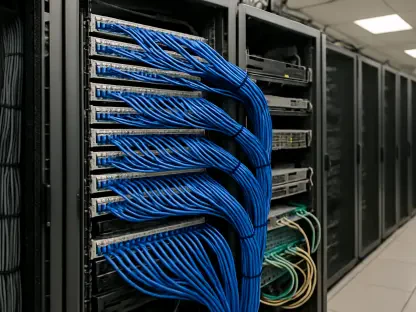Listen to the Article
The telecom industry stands at a decisive historical point as Generation Z (Gen Z) members gradually influence how it operates. They grew up between the late 1990s and the early 2010s, making them the first age bracket to adopt smartphones into their fundamental lifestyle. Networking enterprises must now rework their business models to satisfy digital natives by accepting change while developing innovative solutions and fitting their corporate values to Gen Z B2B requirements. Here is how you can do just that.
Tech-Savvy and Social Media Fluent
Nearly every person in the demographic (95%) owns a smartphone, and 79% insist they need it to survive. 66% consider social media essential to their daily routine. Nearly 42% of survey respondents discover their most unforgettable brands through social media.
A New Wave of Shoppers
Gen Z prioritizes convenience and prefers quick checkout experiences when shopping online. Many people prefer sustainable options. For example, 80% of them shop for second-hand items.
From Calls to Content and the Smartphone Revolution
Young adults use smartphones in almost every part of their lives because they rely on them to engage with digital content. That is why they have a very different relationship with telecommunications than previous age groups. For Baby Boomers and Generation X, Mobile phones were mainly tools for calling. In contrast, Gen Z uses mobile phones to socialize, create content, and enjoy entertainment.
Furthermore, they do not see core network operators as reliable for voice communication. After all, they grew up in a world with automatic and seamless connectivity. People pay attention to mobile and broadband services because they use these tools to enjoy entertainment, express their creativity, and connect with others.
The younger generation wants telecom companies to build strong networks for video streaming and other online activities like social media and gaming. They expect providers to offer extra digital content and valuable tools to improve online experiences.
Juniper Research: Gen Z Powers Value-Added Services
Juniper Research surveyed 3,000 UK subscribers to understand how different age groups would accept mobile operator value-added services, including music, video streaming, and home broadband services. The research indicates younger people are at the forefront of service adoption as they actively embrace new digital solutions in the market. The findings include:
Subscribers between 16 and 29 demonstrate a 45% interest in additional services.
Subscribers from 46 to 59 years old show just a 25% correlation.
Additional services receive little interest from older people, who comprise 13% of the population.
Gen Z subscribers seek more than basic connectivity, with increasing demand for services like music and video streaming and enhanced home broadband. Plus, their love of iPhones has made them the most extensive consumer base, as their smartphones are glued to their hands. Companies capitalize on this growth opportunity as 5G subscriptions and traditional mobile services become less appealing to customers.
A Solution for Meeting the Needs of Younger Consumers
Therefore, telecom operators should offer these users new services as they gain more spending power. However, they need to proceed cautiously because delivering supplementary services does not guarantee success. Plus, they must concentrate on educating their customers about new services to reach mass adoption levels. Social media marketing and in-app messaging are excellent targeted communication tools and can significantly enhance educational outreach.
The best approach is to use customized bundles that merge mainstream popular content (such as music and video streaming) with essential network services to improve user satisfaction and retain customers.
The Juniper research demonstrates how telecom operators require a fundamental change in their approach, from gaining new users to maximizing individual user spending. As acquiring customers has become increasingly expensive, the long-term success of businesses requires intensified efforts to optimize the value received from present subscribers. Using loyalty schemes and exclusive deals with personalized promotions will be fundamental for post-millennial customers to adopt bundled services.
Adapting Connectivity and Content for the Digital Natives
Gen Z considers mobile their entry point into digital experiences while expecting robust offerings from service providers. If you are part of this industry and you want to focus more on fulfilling the B2B needs of this demographic, start by implementing these main strategies:
Evolve Content Offerings: Post-millennials seek novel approaches to interacting with content during their engagements. Telecom companies must collaborate with streaming platforms, gaming agencies, and social media platforms to create multiple service packages beyond standard internet connection benefits. You can provide exclusive benefits like access to unique digital assets, gaming capabilities, and social platform enhancements.
Provide Seamless Connectivity Across Devices: Young adults use multiple platforms simultaneously because they prefer smooth connectivity. These platforms must create functional multi-screen delivery systems and cloud data storage features that operate across numerous connected devices.
Be Sustainable and Socially Responsible: They value sustainable policies that require brands to act responsibly. Telecommunications distributors should adopt sustainable practices and communicate their environmental initiatives effectively to customers. Operations and marketing approaches must express eco-conscious values alongside community support by network distributors.
Empower Creative Expression Through Your Platform: Telecoms should offer user-generated content services like video and photography editing and unique social interaction models that allow creative and entertaining communication—brand and loyalty and engagement increase when users participate in innovative activities and connect on company platforms.
Last but not least, network providers need to recruit youthful, creative staff because they can relate to and effectively understand the desires of modern consumers. Firms will achieve innovation by following the next-generation customer perspectives, thus remaining relevant to upcoming consumer expectations.
How New Perspectives Drive Industry Transformation
According to experts in the field, telecom leaders today might lack a complete understanding of the technology-based and cultural changes that Gen Z is spearheading. They feel this demographic functions as more than an audience for connectivity products since they actively mold the path of the networking sector. The rising financial freedom and leadership positions they will take over in the near future will expand their power significantly.
Operators must establish direct listening channels to understand post-millennial demands and create products that match their needs. The companies must allocate funds to purchase new technologies and make brand adjustments demonstrating digital-first strategies while developing fresh business frameworks that serve broad markets, especially socially aware clients.
Newbridge Networks is a productive example of the shift in the telecommunications industry by recruiting fresh talent and implementing youth-inspired perspectives. Newbridge achieved success by drafting young talent and assigning them important roles, which led to Alcatel’s acquisition of $7 billion. Such an operational model provides equipment groups with a fundamental approach to future readiness.
Conclusion: The Future of Telecom is Gen Z
Generation Z is reshaping networking operations as we speak. To stay relevant in this evolving landscape, providers must adapt to their preferences for content styles and sustainability. Companies that will thrive in this new era understand the importance of content, connectivity, and community while embracing the social responsibility that the public demands.
By staying attuned to this demographic’s needs and fostering innovation, communication service distributors can ensure that they are not only meeting these needs but also meaningfully shaping the industry’s future, thus securing their place in a digital-first world.









